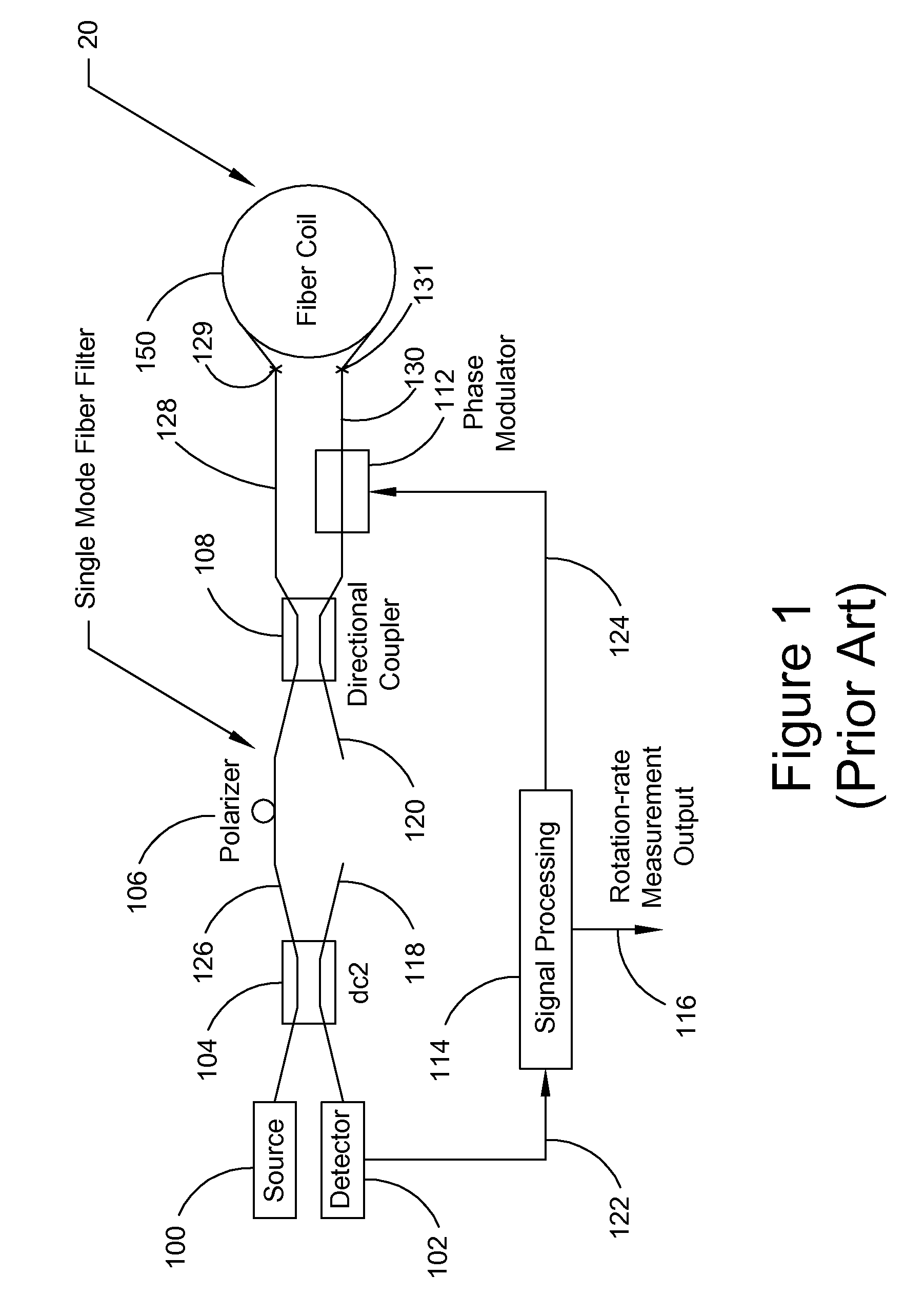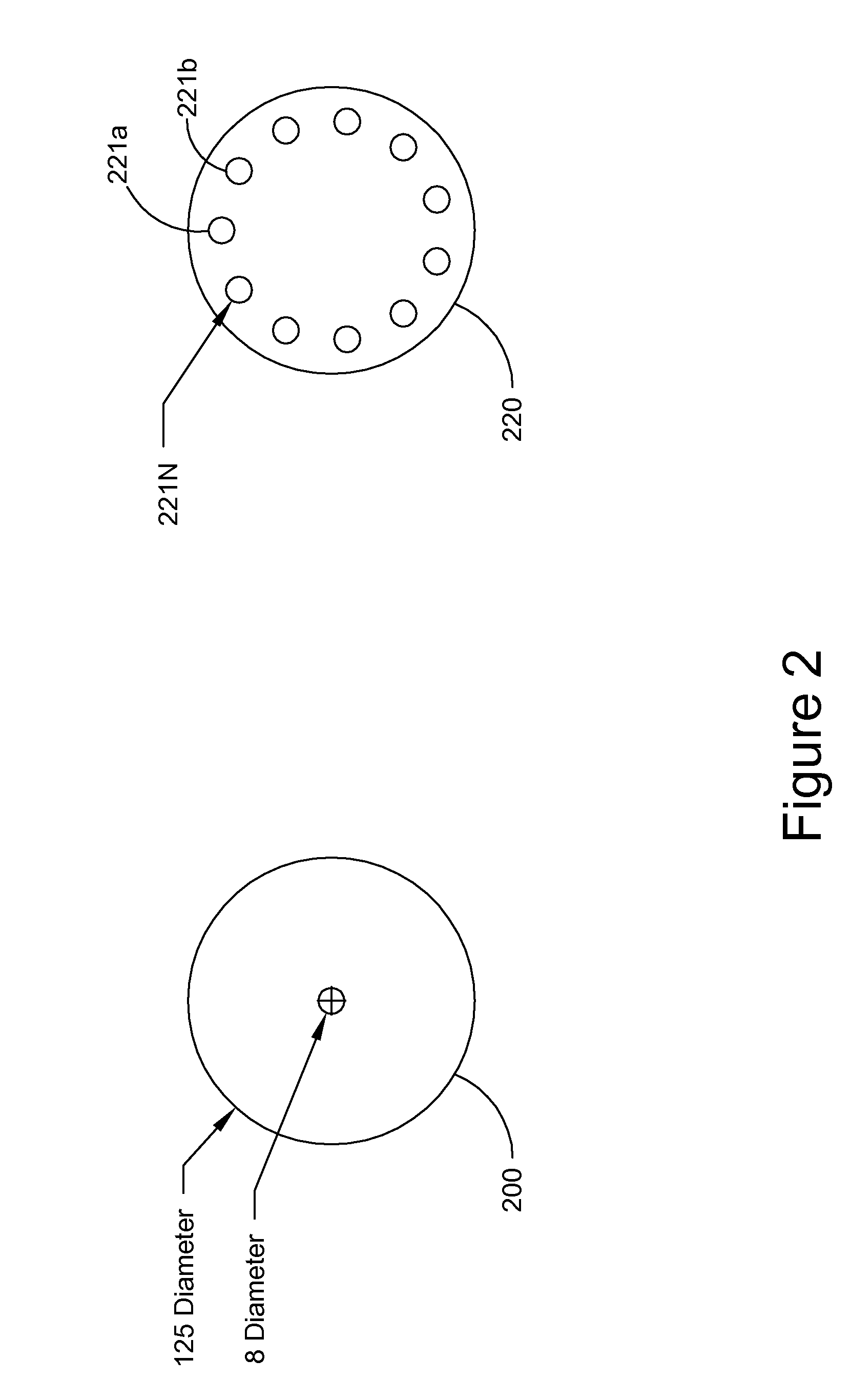Interferometer employing a multi-waveguide optical loop path and fiber optic rotation rate sensor employing same
a multi-waveguide optical loop and interferometer technology, applied in the field of sagnac interferometer, can solve the problems of increasing the difficulty of winding accurately, the physical length of multi-waveguide fiber, and the inability to achieve perfect reduction, so as to increase the sagnac phase difference in fog, reduce the physical length of multi-waveguide fiber, and reduce the fiber length of the fiber coil
- Summary
- Abstract
- Description
- Claims
- Application Information
AI Technical Summary
Benefits of technology
Problems solved by technology
Method used
Image
Examples
Embodiment Construction
[0029]A general block diagram of a FOG known in the prior art is depicted in FIG. 1 as aforedescribed in the Background. As is common in fiber optic rate sensors, a light source 100 provides a source light wave that is passed through a directional coupler 104, polarizer 106 via a single mode fiber 126, and a second directional coupler 108 that splits the impinging source light wave into (i) a first light wave that enters a first end 129 of a single mode fiber that is wound into a fiber coil 150 via fiber 128, and (ii) a second light wave that passes through a phase modulator 112 and fiber 130 before entering the second end 131 of the single mode fiber that is wound into the fiber coil 150.
[0030]The first and second light waves, having traversed the same exact optical path of the single mode fiber or single waveguide of the fiber coil 150, are again passed through the directional couple 108, polarizer 106, and directional coupler 104, where a portion of each of the light waves is dir...
PUM
 Login to View More
Login to View More Abstract
Description
Claims
Application Information
 Login to View More
Login to View More - R&D
- Intellectual Property
- Life Sciences
- Materials
- Tech Scout
- Unparalleled Data Quality
- Higher Quality Content
- 60% Fewer Hallucinations
Browse by: Latest US Patents, China's latest patents, Technical Efficacy Thesaurus, Application Domain, Technology Topic, Popular Technical Reports.
© 2025 PatSnap. All rights reserved.Legal|Privacy policy|Modern Slavery Act Transparency Statement|Sitemap|About US| Contact US: help@patsnap.com



